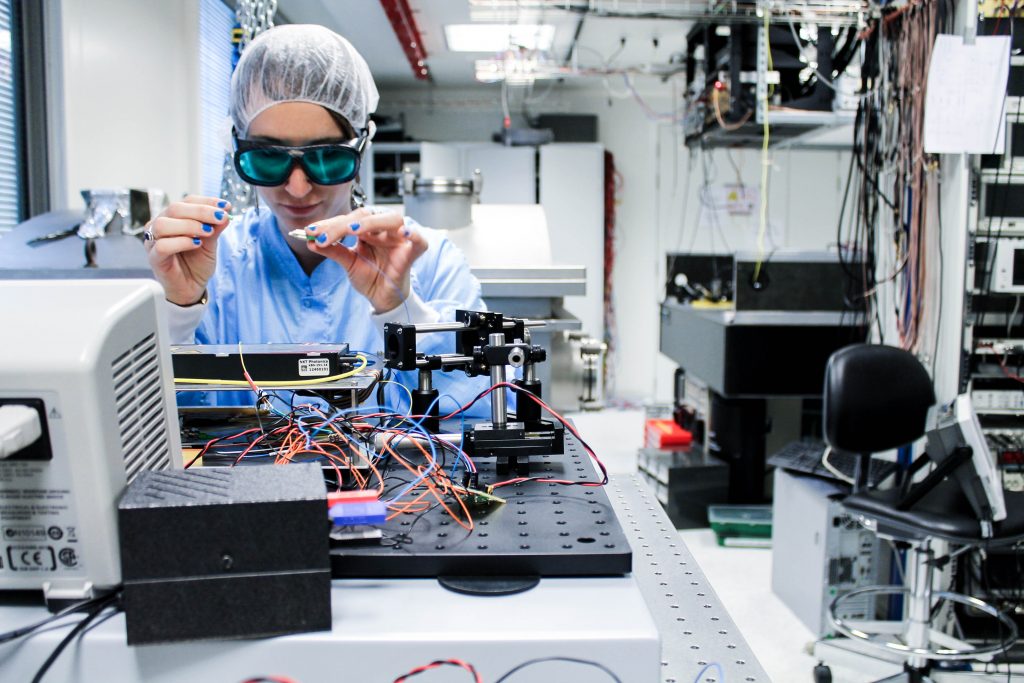Lucile Fayon: Seismologic space instrumentation: transfer function of the 6 axes InSight seismometer and development of a picometric interferometric displacement sensor
Lucile Fayon’s PhD was funded by UnivEarthS, where she worked in the I3 team: Fundamental Physics and Geophysics in Space, at IPGP and APC under the direction of Philippe Lognonné and Hubert Halloin.
She defended her thesis on Tuesday 17 April 2018 at the University Paris-Diderot.
Thesis title:
Seismologic space instrumentation: transfer function of the 6 axes InSight seismometer and development of a picometric interferometric displacement sensor
Click here to consult the complete manuscript of Lucile Fayon’s thesis.
Abstract :
The understanding of the Solar System formation and its evolution is deeply connected to the knowledge on its planetary interior structures. In situ studies with seismometers are therefore crucial to probe the internal structure (distribution and thickness of layers) and composition of the terrestrial planets.
Indeed, SEIS (Seismic Experiment for Interior Structure) will land on Mars in 2018 (NASA InSight mission). Two types of sensors of the SEIS instrument, the VBBs (Very Broad Band) and SPs (Short Period), are mounted on the LVL (a mechanical levelling system) for which the purpose is twofold : ensure a level placement of the sensors on the Martian ground under yet unknown local conditions and provide mechanical coupling to the ground. In this thesis, we developed a simplified analytical model of the LVL structure in order to reproduce its mechanical behaviour by predicting its resonances and transfer function. This model will allow estimation of the LVL effect on the VBBs and SPs data recorded on Mars. It is first implemented numerically and its validation is then guaranteed thanks to the observation of many similarities between
our results and those of the laboratory experiments realized with the LVL flight model. These comparisons prove the model fidelity with reality. After some simulations, we noticed a clear influence of the mechanical coupling between the LVL feet and the ground in the resonances found. For this reason, an inversion study has been realized in order to study if this model could allow an estimation of the elastic properties of the InSight landing site regolith. Another work consists in modeling the 3 VBBs and the 3 SPs on the LVL and to observe the response of the 6 axes SEIS instrument in translation and rotation. This study can allow to estimate the performances of SEIS, especially in rotation that can be one important information to recover the phase velocity of surface seismic waves, highly dependent on the ground composition. This can be realized on Mars with an active seismic experiment thanks to the other main instrument of the InSight mission : HP3.
Today, new projects are also being considered for a seismic return to the Moon. Indeed, the Apollo seismometers had good resolution in ground displacement but were however unable to detect the Lunar ground seismic noise, named “meteoritic hum”. This noise is possibly due to the continuous fall of micro-meteorites and its amplitude has been estimated to be about 1/100 of the resolution of the Apollo sensors. Core seismic phases, although detected through stacking, have not also been individually recorded. A new generation of broadband seismometers,100 to 1000 times more sensitive than the Apollo ones are therefore requested. This sensitivity will allow to reach the lunar seismic noise floor and thus permit to take benefit of all the waves generated by the Moon seismic activity. The core of such seismometer will be the proof mass displacement sensor, with extreme improvement in performances, linearity and noise level. During this thesis, we developed an optical readout prototype for an high-sensitive lunar seismometer, based on the use of gravitational waves detectors’ technology. Indeed, this is the reference in terms of interferometric measurements at low frequency and very low noise levels. The prototype is based on the “Pound-Drever-Hall” laser frequency stabilization technique. The objective is to improve the sensitivity of InSight VBBs by about 2 orders of magnitude. The measurement principle is presented in this manuscript, as well as the expected performances, the technical choices made for the experimental implementation and the first results.

